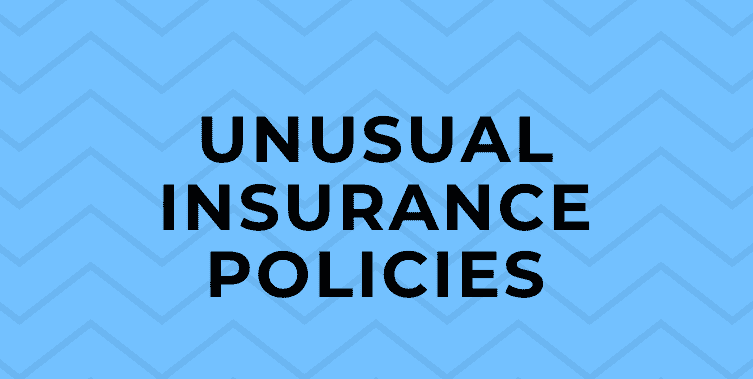Leveraged life insurance is an innovative strategy that combines the benefits of life insurance protection with potential financial growth. By borrowing funds to pay for life insurance premiums, individuals can access substantial death benefits without tying up their liquid assets.
This strategy appeals to high net worth individuals seeking to preserve wealth while providing financial security for their loved ones. In this article, we will explore the concept of leveraged life insurance, its benefits, risks, and key considerations.
Meaning of Leverage Life Insurance
Leveraged life insurance, also known as premium financing or leveraged insurance planning, is a strategy where individuals or businesses borrow money to pay for life insurance premiums. By obtaining a loan, policyholders can acquire a higher amount of life insurance coverage than they could afford on their own.
The borrowed funds are used to cover the premiums over the loan term, while the policyholder remains the owner of the policy. The aim is to maximize the benefits of life insurance while minimizing out-of-pocket costs.
However, leveraged life insurance can come with a high level of risks, such as interest rate fluctuations, investment performance, and potential policy lapses. Hence it is essential to consult with financial professionals to fully understand the implications and risks before considering this strategy to be on the right track.
With that being said, let’s get started with what we have for today!
Things to Consider Before Leveraging a Life Insurance Policy
Here are some major factors you should consider before leveraging a life insurance policy:
- Purpose: Determine the purpose of the life insurance policy, whether it’s to provide financial security for your family, cover outstanding debts, or leave a legacy.
- Coverage Amount: Calculate the appropriate coverage amount based on your financial obligations, future expenses, and desired level of protection.
- Policy Type: Explore different types of life insurance policies, such as term life, whole life, or universal life, and choose the one that aligns with your needs and budget.
- Premiums: Evaluate the affordability of the premiums and ensure they fit within your budget for the long term.
- Health Assessment: Understand the impact of your health condition on the policy’s premium and coverage options. Consider getting a medical exam if required.
- Policy Riders: Assess the availability and benefits of optional policy riders, such as critical illness coverage or disability income, to enhance your policy’s scope.
- Insurer’s Reputation: Research the reputation and financial strength of the insurance company to ensure they have a track record of reliable service and timely claim settlements.
- Policy Exclusions: Review the policy’s exclusions and limitations to understand what circumstances may not be covered by the insurance.
How to Use Life Insurance to Build Wealth
Life insurance can be a valuable tool for building wealth and providing financial security for your loved ones. While life insurance primarily serves as a means of protection, certain types of policies offer opportunities for wealth accumulation. Here are some strategies to consider when using life insurance to build wealth:
Choose the right type of policy: There are primarily two types of life insurance policies you can consider for wealth accumulation:
- Whole life insurance: This type of policy provides coverage for your entire life and includes a cash value component that grows over time. It offers a guaranteed death benefit and a guaranteed cash value accumulation, making it a long-term savings and investment tool.
- Indexed universal life (IUL) insurance: IUL policies offer the opportunity to participate in stock market index gains while providing a guaranteed minimum interest rate. They offer flexibility in premium payments and the potential for higher returns.
Start early: The earlier you start a life insurance policy, the more time it has to grow in value. It’s beneficial to begin when you are young and in good health to secure lower premiums and maximize the potential for long-term growth.
Pay premiums strategically: If you have a whole life insurance policy, paying premiums consistently and on time is crucial. Timely premium payments help build the policy’s cash value and ensure the policy remains in force. Missing payments or borrowing from the policy excessively can reduce its growth potential.
Utilize cash value growth: Both whole life insurance and IUL policies accumulate cash value over time. This cash value can be accessed in several ways:
- Policy loans: You can borrow against the cash value of your life insurance policy while keeping the policy in force. However, be aware that outstanding loans may reduce the death benefit if not repaid.
- Partial withdrawals: You can withdraw a portion of the cash value without canceling the policy. Keep in mind that withdrawals may reduce the policy’s death benefit.
- Surrender the policy: If you no longer need the coverage or want to terminate the policy, you can surrender it and receive the accumulated cash value. However, surrendering the policy may have tax implications, so consult with a financial advisor.
Explore dividend options: Some whole life insurance policies pay dividends to policyholders. These dividends can be used to purchase additional coverage, accumulate cash value, or be taken as cash. Reinvesting dividends can accelerate the growth of the policy’s cash value.
Seek professional advice: Building wealth with life insurance can be complex, and it’s advisable to consult with a qualified financial advisor or insurance professional. They can provide personalized guidance based on your financial goals, risk tolerance, and overall financial situation.
Remember, life insurance should not be the sole strategy for building wealth. It’s essential to diversify your investments and consider other financial tools such as retirement accounts, real estate, and stocks to create a well-rounded wealth-building plan.
Benefits and Risks of Leveraged Life Insurance
| Benefits | Description | Risks | Descriptio |
| 1. Enhanced Returns | Leveraged life insurance can potentially provide higher returns compared to traditional life insurance policies. | 1. Interest Rate Risk | Leveraged life insurance policies often involve borrowing against the cash value component, exposing policyholders to the risk of rising interest rates, which can increase borrowing costs. |
| 2. Tax Advantages | The policyholder may enjoy tax benefits, such as tax-deferred growth on the cash value component of the policy. | 2. Market Volatility | If the invested assets within the policy underperform or experience losses, it may impact the policy’s cash value and the ability to repay the borrowed funds. |
| 3. Estate Planning | Leveraged life insurance can be an effective tool for estate planning, providing a source of funds to cover estate taxes or pass wealth to beneficiaries. | 3. Policy Termination | If the policy is terminated prematurely, there may be surrender charges, tax consequences, and the loss of the insurance coverage and potential benefits. |
| 4. Cash Flow Flexibility | Policyholders can access the cash value component of the policy to supplement their income or meet financial needs during their lifetime. | 4. Increased Debt Burden | Borrowing against the policy’s cash value creates additional debt obligations that need to be managed and repaid, potentially increasing financial strain. |






